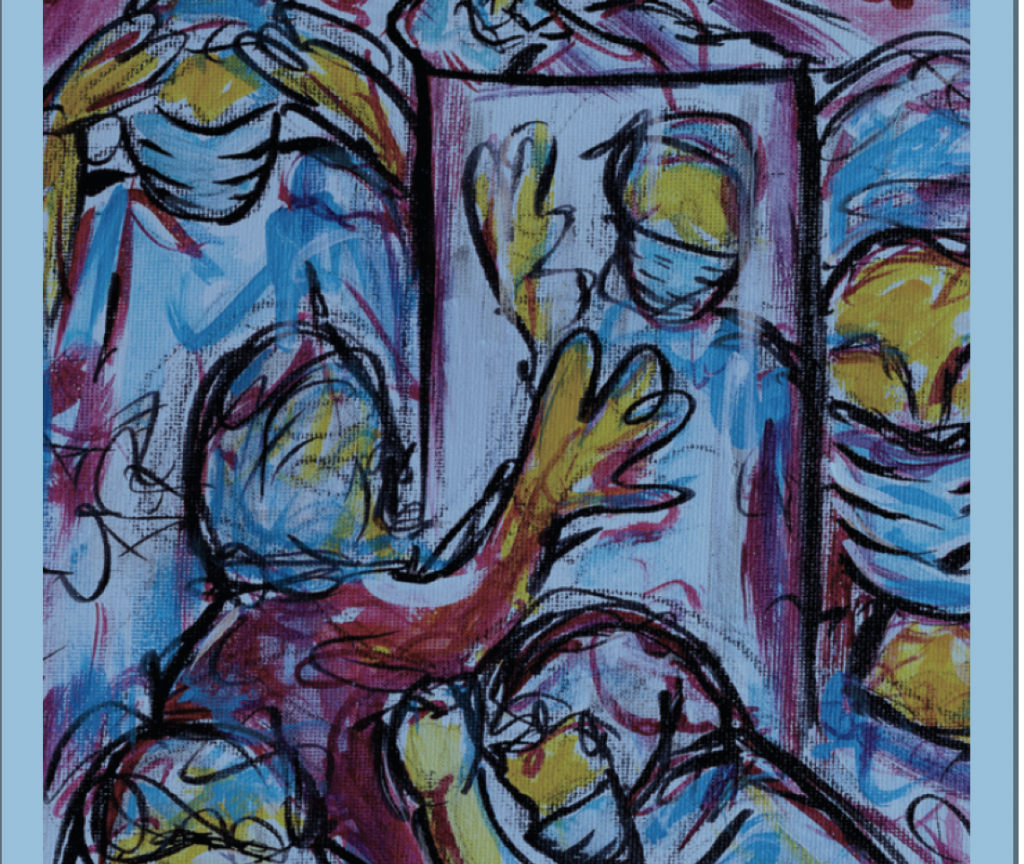
The idea to write and publish a prescriptive account of how SBH Health System managed the pandemic first came to Dr. Ridwan Shabsigh in the summer of 2020.
It followed a time when a new virus from Wuhan, China, had blindsided the world. Unlike health crises caused by an earthquake or flood, or some catastrophic accident, COVID-19 was a highly infectious disease that threatened the safety of not only patients, but also the frontline healthcare workers who treated them. No therapeutics or ways to minimize exposure existed, and vaccines were thought to be years away.
Hit hardest in those early months was New York City, particularly the Bronx. The people who live in the communities surrounding St. Barnabas Hospital would soon prove to be highly vulnerable.
“My colleagues and I realized that while this was a bad and sad experience, the learning was invaluable,” says Dr. Shabsigh, SBH’s chair of the Department of Surgery. “This was an opportunity to teach the healthcare community how to manage a health crisis and, more importantly, how to plan for a future health crisis. That was the genesis of the idea. I presented this to a number of colleagues here, chairs of departments and directors of divisions, people I collaborate with, and got a lot of encouraging feedback.”
This soon led to the drafting and submission of a book proposal by Dr. Shabsigh that caught the attention of several leading medical/health publishers. The culmination of this will be the publication in early 2022 of Health Crisis Management in Acute Care Hospitals: Lessons Learned from COVID-19 and Beyond by Springer Nature, a leading global scientific, technical and medical publisher. The book will target a professional audience – senior healthcare administrators, frontline health care workers, public health officials and planners, disaster management planners, healthcare educators and universities that teach public health administration and planning.
According to the book’s outline, “The COVID-19 crisis came as an unpleasant surprise and shock to many healthcare systems and hospitals, especially in the crisis epicenter, New York City. The Bronx was one of the hardest hit boroughs of New York City with significant negative impact of the COVID-19 pandemic on its indigent population…Within a short three weeks, SBH increased its inpatient capacity by 50 percent. However, during the same short time, it increased its critical care capacity by 500 percent, providing critical care to severely ill patients on ventilators.
“This book will chronicle step-by-step and describe how this accomplishment was done. Accounts from the frontline health worker and from clinical and administrative leaders will describe important aspects of crisis management, such as team building, multidepartmental coordination, effective communications, dynamic decision making in response to rapidly changing situations, keeping up morale, caring for healthcare workers and managing the supply chain.”
Originally scheduled for publication in 2021, the second surge of the virus from November 2020 through May 2021, followed by the advent of the delta variant, caused the delay. “I think the story of how St. Barnabas coped with the pandemic is very compelling,” says Dr. Shabsigh. “There are many factors in the socio-economic determinants of health in the Bronx, including access to care, money, insurance coverage, and health literacy. Many factors made the population more vulnerable to a crisis like this. That’s one big factor. The other is that this is a safety net hospital with financial limitations. This is not a hospital that is flush with money.”
The size of the hospital, he says, offered both advantages and disadvantages during the crisis. “The advantage of small is the ability to be dynamic and flexible with stakeholders when it comes to making decisions on delivering care. Large institutions are not as agile. They can’t do things as fast or as timely. The disadvantage is in terms of leverage, particularly in areas like purchasing. We don’t have the same ability to negotiate.”
The trick of course, and Dr. Shabsigh’s challenge as the lead author and editor, was to mobilize the work of 50 or so collaborators. The book includes 20 chapters – from more than one hundred pages on critical care – to fewer than 10 pages on the patient community and the Bronx. “It was not easy getting this book to the finish line,” he says. “I have to give my colleagues a huge thank you for putting up with my annoying reminders, my frequent phone calls, emails and text messages trying to keep the process moving.”
To show the enormity of the endeavor, several weeks before submission of the final manuscript, Dr. Shabsigh produced an Excel spreadsheet with a lengthy list of the chapters, side-by-side with its authors, and the status of each. He contracted a medical writer to help in the editing and formatting of chapters.
He admits to having learned new things from his contributing authors. “It has been an honor for me to read the different chapters,” he says. “My love and respect for my colleagues increased as we were doing this project. I saw how many wonderful things people did during the crisis. It was not only the frontline, but the backline as well.”
The most important factors in helping a hospital plan and manage such a crisis, he says, come down to operations and culture. “These two go hand-in-hand,” he says. “Procedures and operations must be in place before a crisis like this hits. After that, you have to have a collaborative culture. It’s like having a body and a spirit. The body has to be healthy and functioning and the spirit has to have a heart.”
He hopes that the book will lead in the future to the hospital hosting an annual teaching course on the management of such a crisis. He also thinks its publication will raise the reputation and prestige of the hospital. “We have a good story, a heartwarming story to tell,” he says. “I think the book will be an eye opener.”




